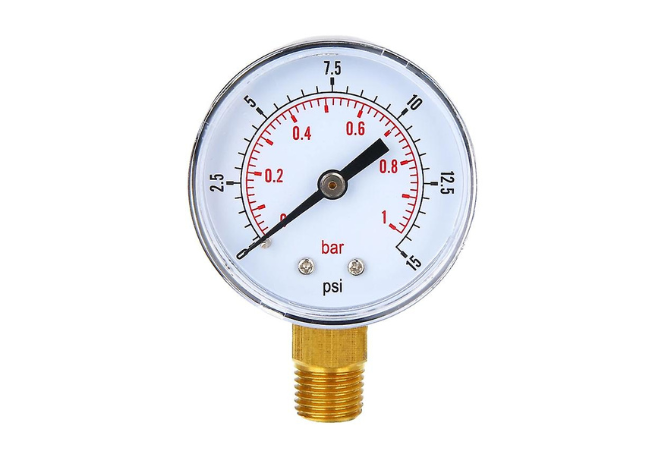Why Are Sanders the Go-To Tools for Perfect Surface Finishing?
Sanders are indispensable tools in any workshop, construction site, or DIY environment. These Power Tools are specifically designed to smooth, polish, and refine surfaces, making them essential for both professionals and hobbyists. Whether preparing a wooden surface for painting or restoring the shine to metal, sanders significantly enhance efficiency and precision. With the rising popularity of Multitools and Grinders, sanders continue to stand out due to their specialised performance in surface finishing and material removal.
How Do Sanders Work in Practical Applications?
Sanders function by using an abrasive surface—typically sandpaper or a sanding belt—attached to a motor-powered base. This base oscillates, rotates, or vibrates, depending on the type of sander, to efficiently grind down surfaces. These tools are not only used in woodworking but also in metalwork, automotive body repair, and even home renovation projects.
What Types of Sanders Are Available Today?
Different types of sanders are tailored to various surfaces, shapes, and tasks. Choosing the right one depends on the required finish, working area, and material.
Orbital Sanders
- Ideal for light to medium sanding tasks.
- Feature a circular sanding pad that moves in orbits.
- Best used for smoothing flat surfaces and prepping for paint.
Random Orbital Sanders
- Combine spinning and orbital motion for a swirl-free finish.
- Great for fine finishing on wood, metal, and plastic.
- More versatile than basic orbital sanders.
Belt Sanders
- Use a continuous loop of sandpaper for aggressive sanding.
- Designed for rapid material removal on large, flat surfaces.
- Useful for levelling and shaping hardwood or removing paint.
Detail Sanders
- Comes with a triangular pad to reach tight corners and edges.
- Favoured for intricate woodwork, furniture restoration, and trim work.
- Compact and precise, ideal for small-scale sanding.
Disc Sanders
- Feature a round sanding disc mounted on a benchtop or handheld tool.
- Provide decisive sanding action for metal, wood, or plastic.
- Effective for shaping and smoothing large or irregular surfaces.
Spindle Sanders
- Include a drum that oscillates vertically while spinning.
- Common in woodworking shops for sanding curves and contours.
- Excellent for creating smooth finishes on decorative pieces.
When Should You Use a Sander Instead of Other Tools?
Sanders outperform standard Multitools and Grinders in tasks involving surface preparation and finishing. While Grinders are often used for cutting or heavy-duty material removal, sanders are optimised for tasks that require finesse and evenness.
Use a sander when:
- Preparing a surface for painting or staining
- Removing varnish, rust, or old paint
- Smoothing wooden furniture or cabinetry
- Refinishing floors or decking
- Achieving a uniform surface on plastic or metal
What Features Should You Look For in a Sander?
To ensure efficiency and ease of use, modern sanders are designed with features that enhance user control and safety.
Variable Speed Settings
- Allow the user to adjust the tool’s speed according to the material.
- Higher speeds for aggressive removal, lower speeds for fine finishing.
Dust Collection System
- Built-in vacuum ports or dust bags reduce mess and health risks.
- Essential for indoor use or prolonged sanding sessions.
Ergonomic Design
- Rubberised grips and lightweight frames minimise fatigue.
- Important for long-duration or overhead sanding.
Easy Paper Attachment
- Velcro or clip-based systems for quick sandpaper changes.
- Reduces downtime and increases productivity.
How Does Sanders Improve Work Quality and Efficiency?
Using a sander dramatically reduces the manual effort required in surface preparation. It ensures uniform sanding results, which is crucial for finishes such as paint, stain, or varnish. The tool's speed and accuracy also lead to significant time savings, especially on large projects.
Benefits include:
- Enhanced surface smoothness and uniformity
- Reduced risk of gouging or uneven sanding
- Consistent results across multiple materials
- Quicker project completion with less effort
Are Sanders Compatible with Other Power Tools?
Yes, Sanders often complements a range of Power Tools, Multitools, and Grinders. For example:
- Use a jigsaw or circular saw to cut wood, then a sander to finish edges.
- After grinding down metal with a bench grinder, use a disc sander for polishing.
- A multitool may reach tight areas, followed by a detail sander for finishing.
What Are the Most Common Applications of Sanders?
Sanders serves a broad spectrum of industries and home tasks.
Used in:
- Carpentry and cabinetry for finishing panels and frames
- Automotive shops for surface prep before painting
- Metalworking for deburring or surface blending
- Construction sites for drywall smoothing and floor refinishing
- DIY projects such as upcycling furniture or restoring antiques
Why is Sanders a Must-Have in Any Tool Collection?
Whether you’re a contractor, artisan, or home renovator, sanders are among the most reliable and frequently used Power Tools. Their ability to transform rough, uneven surfaces into smooth, ready-to-finish canvases makes them essential for quality craftsmanship. By integrating Sanders with your arsenal of Multitools and Grinders, you equip yourself to handle both heavy-duty and detailed tasks with confidence and efficiency.




Comments
Post a Comment